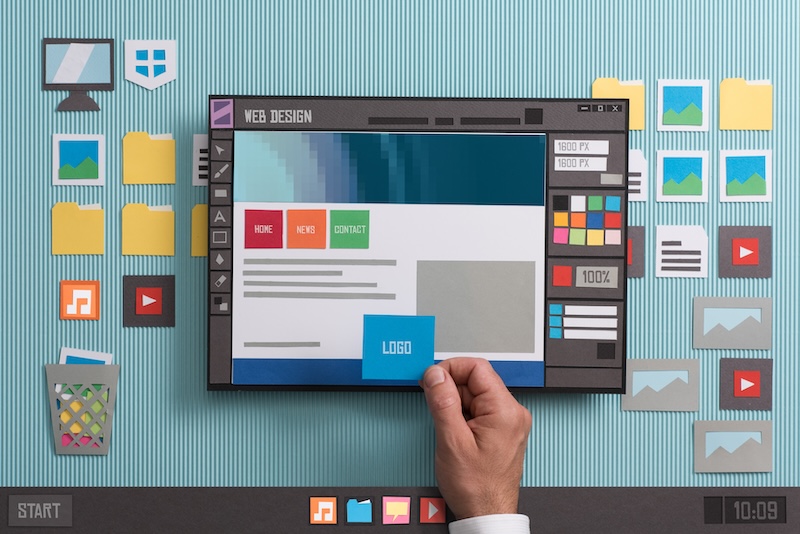Designing Intuitive Navigation for Improved User Experience: A Comprehensive Guide

Designing Intuitive Navigation for Improved User Experience: A Comprehensive Guide
Navigating a website or application should be as intuitive as flipping the pages of a well-organized book. When users can seamlessly find what they are looking for, their overall experience is enhanced, leading to increased satisfaction and engagement. This guide delves into the intricacies of designing intuitive navigation systems, offering detailed insights, practical examples, and actionable strategies to elevate your user experience.
Understanding the Importance of Intuitive Navigation
Intuitive navigation is the backbone of any successful digital interface. It serves as the map that guides users through your content, ensuring they can effortlessly access the information they need. Poor navigation can lead to frustration, increased bounce rates, and ultimately, the loss of potential customers.
Key Benefits of Intuitive Navigation
- Enhanced User Satisfaction: Users can quickly find what they're looking for, reducing frustration and increasing satisfaction.
- Increased Engagement: Easy navigation encourages users to explore more content, increasing time spent on your site.
- Improved Accessibility: A well-structured navigation system accommodates diverse user needs, including those with disabilities.
- Higher Conversion Rates: Simplified paths to desired actions (like purchases) can boost conversion rates.
Principles of Designing Intuitive Navigation
Creating intuitive navigation involves adhering to several core principles that ensure a cohesive and user-friendly experience.
1. Consistency
Consistency in navigation design means maintaining uniformity across all pages. This not only helps users predict how to navigate but also reinforces your brand's identity.
Example:
<nav>
<ul>
<li><a href="/home">Home</a></li>
<li><a href="/about">About</a></li>
<li><a href="/services">Services</a></li>
<li><a href="/contact">Contact</a></li>
</ul>
</nav>
2. Clarity
Labels should be clear and descriptive, guiding users without ambiguity. Ambiguous labels can confuse users and lead to frustration.
Example: Instead of a vague "Resources," use "Blog" or "Tutorials."
3. Simplicity
Keep navigation simple and minimalistic, avoiding unnecessary complexity. A cluttered navigation bar can overwhelm users.
Example:
/* Example CSS for simple navigation */
nav ul {
list-style-type: none;
display: flex;
justify-content: space-around;
}
nav a {
text-decoration: none;
color: #333;
}
4. Predictability
Users should be able to predict where a link will take them. This builds trust and improves the user experience.
Example: Ensure that a "Contact" link leads to a contact form or information page, not a blog post.
5. Feedback
Provide feedback to users to confirm their actions. This can be as simple as changing the color of a link when hovered over or clicked.
Example:
nav a:hover {
color: #0056b3;
}
6. Accessibility
Design navigation that accommodates all users, including those with disabilities. Use semantic HTML, ARIA labels, and ensure keyboard navigability.
Example:
<nav aria-label="Main Navigation">
<ul>
<li><a href="/home">Home</a></li>
<li><a href="/about">About</a></li>
</ul>
</nav>
Practical Examples of Intuitive Navigation
Below are some practical examples of intuitive navigation designs that adhere to the principles discussed.
Example 1: Hamburger Menu for Mobile
The hamburger menu is a popular choice for mobile navigation due to its space-saving design.
Code Snippet:
<div class="hamburger-menu">
<input type="checkbox" id="toggle-menu" />
<label for="toggle-menu">
<span></span>
<span></span>
<span></span>
</label>
<nav>
<ul>
<li><a href="/home">Home</a></li>
<li><a href="/about">About</a></li>
</ul>
</nav>
</div>
Example 2: Breadcrumbs for Hierarchical Navigation
Breadcrumbs are useful in guiding users through hierarchical content, showing their current location and how they got there.
Code Snippet:
<nav aria-label="breadcrumb">
<ol>
<li><a href="/home">Home</a></li>
<li><a href="/category">Category</a></li>
<li>Current Page</li>
</ol>
</nav>
Best Practices for Designing Intuitive Navigation
-
Conduct User Research: Understand your audience's needs and preferences through surveys, interviews, and usability testing.
-
Use Visual Hierarchy: Highlight important navigation elements using size, color, and positioning to guide users naturally.
-
Leverage Analytics: Use tools like Google Analytics to track navigation usage and identify potential pain points.
-
Implement Responsive Design: Ensure your navigation adapts seamlessly across different devices and screen sizes.
-
Test and Iterate: Continuously test your navigation design and refine it based on user feedback and analytics data.
Actionable Takeaways
- Regularly Review Your Navigation Design: Conduct periodic reviews to ensure your navigation remains intuitive as your site evolves.
- Embrace User-Centered Design: Prioritize user needs in every aspect of your navigation design process.
- Stay Updated with Trends: Keep abreast of the latest industry trends and technologies to incorporate innovative navigation solutions.
Conclusion and Next Steps
Designing intuitive navigation is a critical component of enhancing user experience. By adhering to key principles such as consistency, clarity, and accessibility, and by leveraging practical examples and best practices, you can create navigation systems that resonate with users and facilitate seamless interactions.
Next Steps
- Evaluate Your Current Navigation: Conduct a thorough assessment of your site's current navigation.
- Gather User Feedback: Engage with users to gather insights on their navigation experience.
- Implement Changes: Apply the principles and best practices discussed to improve your navigation design.
- Monitor and Iterate: Continuously monitor user interactions and iterate on your design to ensure it remains effective and user-friendly.
By focusing on these areas, you can craft navigation experiences that not only meet user expectations but also contribute to the overall success of your digital presence.